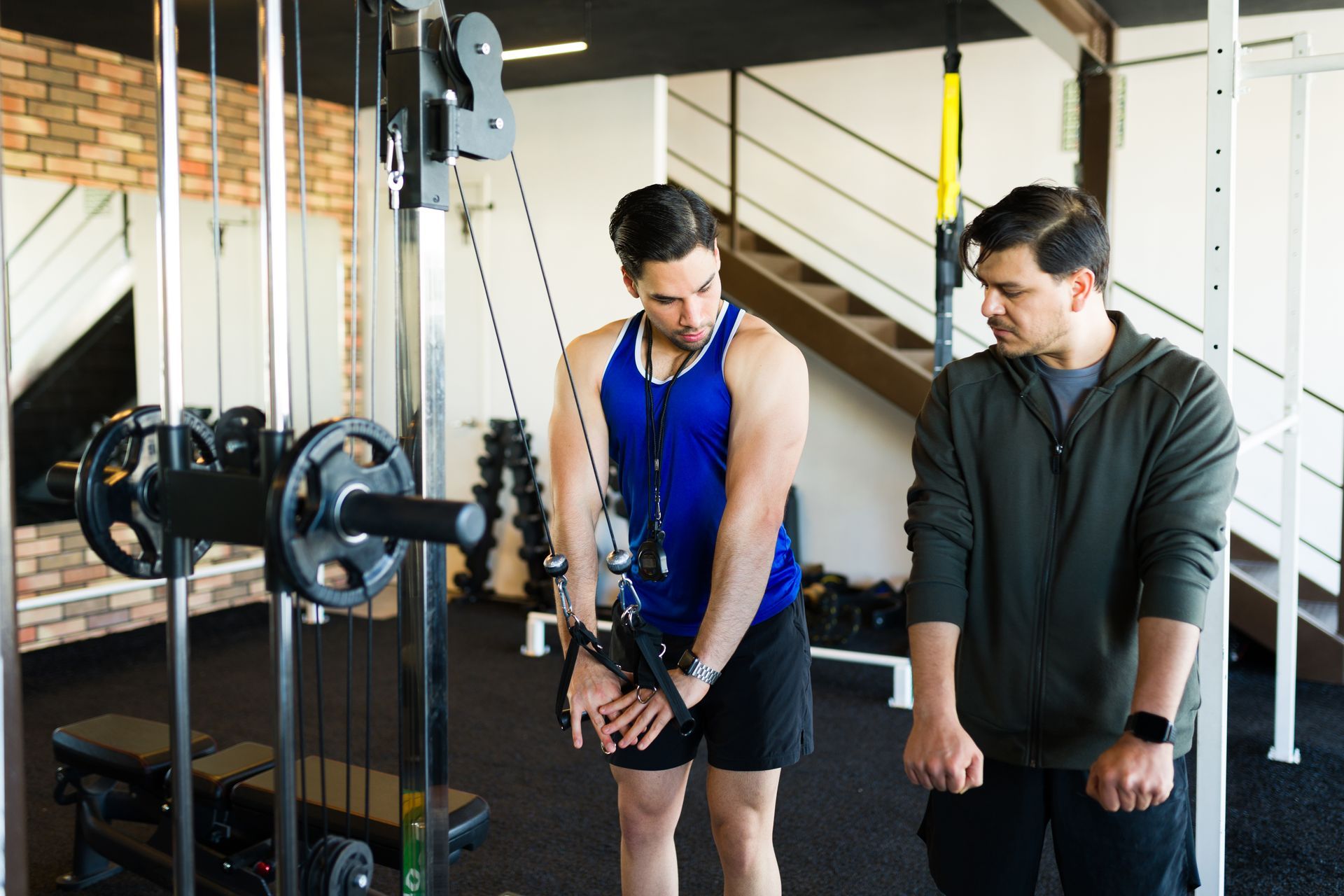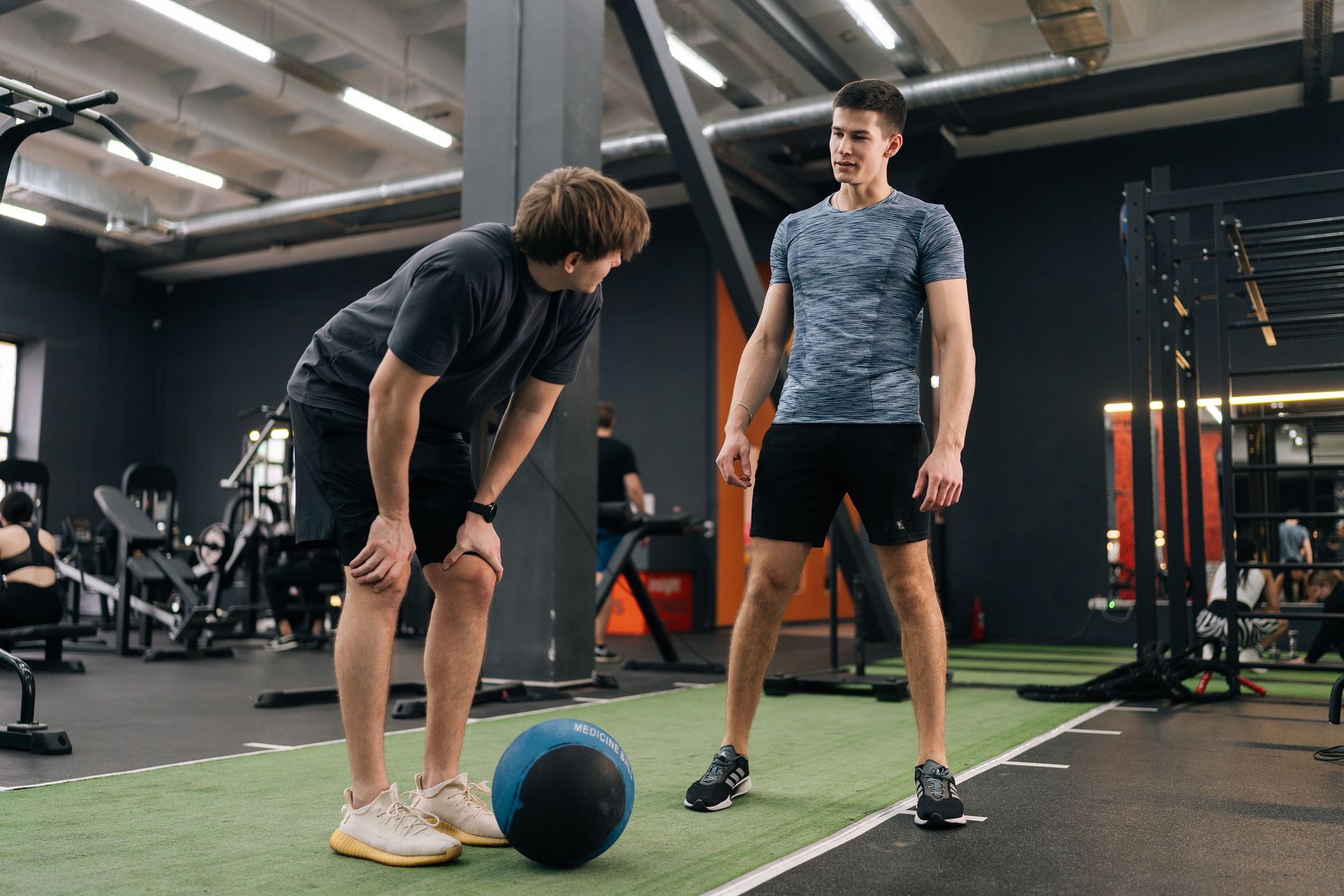HEALTHY LIFESTYLE + FITNESS BLOG

A Guide from a Personal Trainer in Nashville Functional training originally focused on improving real-life movement patterns like lifting, climbing, and carrying. Today, however, the term is often misused. In this guide, Coach Jim—a leading personal trainer in Nashville —breaks down what functional training really means, clears up common myths, and shows you how to build workouts that truly improve strength, mobility, and everyday performance. The Real Origins of Functional Training Functional training started in rehabilitation settings. Physical therapists needed to help patients regain the ability to perform daily tasks—getting up from chairs, climbing stairs, carrying groceries—safely and independently. From there, the concept moved into strength and conditioning , especially for athletes. Coaches began designing programs that mimicked the movements, speeds, and forces encountered in sport, believing that exercises should reflect the demands athletes face outside the gym. It made sense: real-world movement is multi-planar, integrated, and often performed under load or fatigue. Training that mirrors those challenges better prepares people for life outside the gym—a philosophy I bring to my personal training Nashville programs. Where It Went Wrong Fast forward to today, and "functional training" is so watered down it’s almost meaningless. You'll hear it attached to bootcamps, TikTok trends, and group fitness classes that may or may not have any real connection to improving real-life function . Here’s the problem: ➔ Functional for whom? ➔ Functional for what purpose? A competitive powerlifter needs a different kind of "functional" than a 70-year-old wanting to garden pain-free. A baseball pitcher needs different movement skills than a new mom recovering from back pain. Without context, "functional training" becomes vague, subjective, and often misleading—even for people searching for fitness training in Nashville today. Principles Over Buzzwords Rather than asking is this functional training?, it’s better to ask: Does this follow good training principles? Here’s what matters: Specificity: Does it target the movement patterns, energy systems, and qualities the person needs? Transferability: Will the adaptations carry over to real-world tasks, sports, or injury resilience? Progressive Overload: Is it challenging enough to promote strength and adaptation over time? Movement Quality: Does it reinforce good mechanics, posture, and control? Individualization: Is it tailored to the person’s needs, abilities, and goals? If a program checks these boxes, it's functional —no matter what it’s called. This is the exact approach I use with my Nashville personal training clients —focusing on principles that deliver real-world results, not gimmicks. Common Misconceptions About Functional Training Let’s clear up a few myths that still float around: Myth #1: Machines aren’t functional. Machines can be incredibly useful, especially for early rehab or hypertrophy-focused phases. They allow targeted loading without high stability demands—which can support real-world function depending on how they’re used. Myth #2: More instability = more function. Training on BOSU balls and wobble boards has its place (think ankle rehab or proprioception drills). But constantly destabilizing exercises? Not necessary. Most life (and sports) happens on stable ground. Stable surfaces allow better loading, strength gains, and neuromuscular coordination—what I emphasize in all my personal training Nashville TN programs. Myth #3: Functional training avoids heavy lifting. Quite the opposite. Functional training often involves lifting heavy—because strength matters for almost everyone. Farmers need grip strength. Athletes need power. Older adults need the ability to carry groceries or get off the floor. Load isn’t the problem. Poor application is. So, Should We Keep the Term "Functional Training"? The term can still have value—if it's clearly defined and applied correctly. At its best, it reminds us that training should serve a purpose beyond just aesthetics. It emphasizes integrated movement patterns, core control, joint stability, and real-world carryover—principles central to Nashville fitness training done the right way. But without that context? It's just another buzzword. The smarter move: Zoom in on function for the individual. A mother managing back pain needs different patterns than a CrossFitter chasing PRs. A retiree rehabbing a knee needs different strength work than a semi-pro athlete. Good training doesn’t chase trends. It meets the person where they are—and builds from there. Final Thoughts Functional training started with a powerful goal: ➔ Help people move better , live better , and perform better . But over time, its meaning has been blurred by trends, marketing, and misapplication. Today, smart training isn’t about chasing trends. It's about asking better questions: Is this training functional for the client’s real-world needs?

The debate over the superiority of machines versus free weights in strength training has persisted for decades. If you’re searching for a personal trainer in Nashville to help you navigate your fitness journey, understanding the roles of both training methods is essential. Rather than viewing them as competing approaches, it's crucial to recognize how they complement each other in an effective workout program. Machines: A Controlled Environment Machines offer a structured and guided approach to resistance training, making them a staple in almost every gym. Their defining characteristic is the fixed path of motion, which stabilizes the weight and controls movement. This design simplifies strength training, making it accessible to a broad audience, including beginners and those recovering from injuries. For individuals new to personal training in Nashville TN, machines can provide a safe introduction to resistance training. They help users focus on primary muscle engagement without worrying about balance and stabilization. For example, performing a chest press on a machine allows users to isolate the pectorals and triceps without the additional challenge of stabilizing a free weight. However, the structured nature of machines can also be a limitation. Since they guide the user along a predetermined path, they may not accommodate natural joint movement, potentially leading to discomfort or reinforcing imbalances over time. Additionally, machines often bypass stabilizing muscles, which are crucial for functional strength and overall balance. Machines shine in rehabilitation settings, allowing targeted muscle engagement without overloading injured areas. They are also highly beneficial for bodybuilders focusing on muscle isolation. By eliminating the need for stabilization, machines enable lifters to apply greater intensity to specific muscle groups without compromising form. Free Weights: Freedom and Functionality Free weights—including barbells, dumbbells, and kettlebells—offer unrestricted movement in multiple planes, making them highly effective for building functional strength. This versatility makes them an excellent choice for athletes and individuals seeking fitness training in Nashville that translates to real-world activities. Unlike machines, free weights demand more from the user, engaging a broader range of muscles with every exercise. For example, a barbell squat not only strengthens the quadriceps and glutes but also recruits the core, back, and smaller stabilizing muscles to maintain proper posture and control. Free weights allow for greater flexibility in workout design, with countless variations of exercises that can be tailored to specific goals. However, this freedom comes with a steeper learning curve. Without proper guidance, improper technique can lead to injury. This is where working with personal trainers in Nashville TN can be invaluable. Free weights are particularly effective for compound lifts such as squats, deadlifts, and presses, which work multiple muscle groups simultaneously. However, they can be intimidating for beginners who struggle with form or balance. This is where combining machines and free weights strategically can be beneficial. The False Dichotomy The debate between machines and free weights often presents them as opposing choices, but the truth is they serve different purposes and can coexist within a well-rounded training program. The best approach isn’t about choosing one over the other, but about utilizing both based on individual goals, experience level, and training context. For beginners, machines build confidence and establish foundational strength. As they progress, incorporating free weights enhances balance, coordination, and functional strength. For advanced lifters, machines provide a means to isolate specific muscles after heavy compound lifts. For example, a well-structured leg workout might include barbell squats to develop overall strength and coordination, followed by machine-based leg presses to target the quadriceps with greater intensity once stabilizing muscles are fatigued. Beyond the Gym The discussion also extends beyond gym settings. Many proponents of functional fitness argue that free weights better prepare the body for everyday movements like lifting, carrying, and climbing stairs. These activities require the integration of multiple muscle groups, similar to free-weight exercises. But one thing I am steadfast in saying is that “a strong body is a functional body.” So, any form of training that has a progressive strength element to it should be viewed as “functional,” whether it be machine or free weights. Yet, not everyone trains with functional fitness as their primary goal. For bodybuilders focusing on muscle hypertrophy, machines provide an efficient way to target specific muscles without exhausting stabilizers. This makes them particularly useful for individuals working with personal trainers in Nashville who specialize in body recomposition and aesthetics. Conclusion The choice between machines and free weights isn’t about right or wrong—it’s about how each fits into a well-designed training program. Machines provide safety and simplicity, making them ideal for beginners and focused isolation work. Free weights offer versatility and what is viewed as a more functional strength development, challenging the body in ways that extend beyond the gym. Instead of viewing them as competing options, think of machines and free weights as complementary tools. A personal trainer in Nashville TN can help you develop a program that strategically integrates both, ensuring optimal results based on your fitness level, goals, and needs. By leveraging the strengths of each method, you’ll maximize muscle growth, minimize limitations, and create a sustainable training regimen for long-term success. If you’re looking for expert guidance on incorporating machines and free weights into your workout routine, consider working with personal training in Nashville TN. Contact me today to take the next step in your fitness journey !










